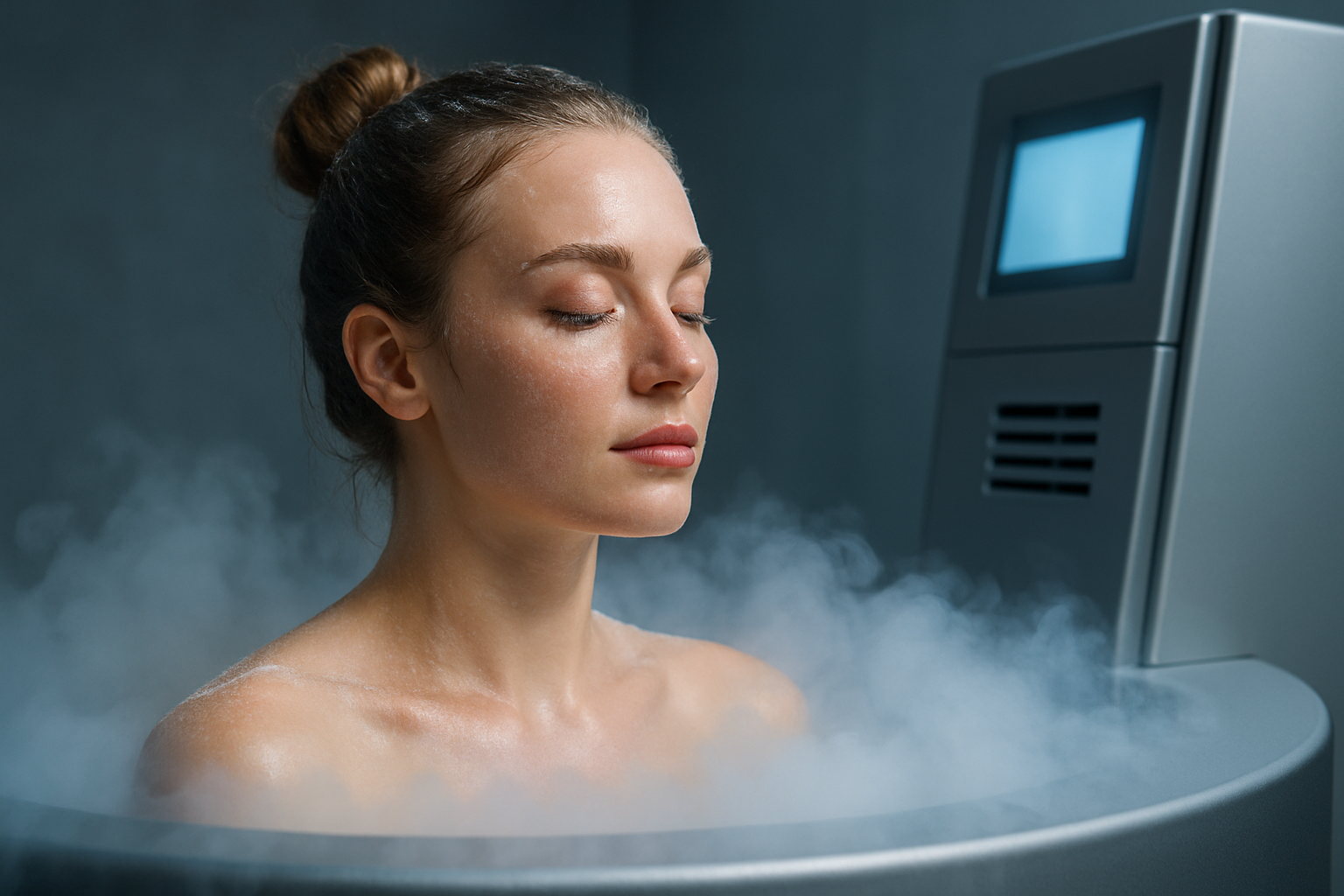Cryotherapy for Beauty: The Science of Subzero Skincare
The beauty industry is no stranger to innovative treatments, but few have captured attention quite like cryotherapy. This cutting-edge technique, which involves exposing the body to extremely cold temperatures, has transcended its roots in sports medicine to become a sought-after beauty treatment. From cryofacials to whole-body cryotherapy chambers, the allure of subzero skincare is captivating beauty enthusiasts and skeptics alike. As we delve into the world of cryotherapy for beauty, we'll explore its origins, mechanisms, and the scientific evidence behind its purported benefits. This chilling trend is reshaping our approach to skincare and challenging traditional notions of beauty treatments.

The treatment quickly gained traction in Europe for its ability to reduce pain and inflammation in athletes. It wasn’t until the early 2000s that beauty professionals began to recognize cryotherapy’s potential for skincare. The leap from sports medicine to beauty treatment was driven by observations of cryotherapy’s effects on skin appearance and cellular regeneration.
The Science Behind the Chill
At its core, cryotherapy for beauty relies on the body’s response to extreme cold. When exposed to subzero temperatures, blood vessels in the skin constrict, redirecting blood flow to vital organs. This process, known as vasoconstriction, is followed by rapid vasodilation as the body warms up. This sudden rush of nutrient-rich blood back to the skin’s surface is believed to offer several beauty benefits.
The extreme cold also triggers the release of endorphins and anti-inflammatory molecules, potentially reducing skin inflammation and redness. Furthermore, the cold shock is thought to stimulate collagen production, a key protein for maintaining skin elasticity and youthfulness. Some researchers suggest that cryotherapy may also boost metabolism and aid in fat reduction, though more studies are needed to confirm these effects.
Cryofacials: The Cool New Face of Skincare
One of the most popular applications of cryotherapy in beauty is the cryofacial. This treatment involves applying a controlled stream of vaporized liquid nitrogen to the face and neck. Unlike traditional facials that often involve heat to open pores, cryofacials aim to tighten pores and boost circulation through cold exposure.
Proponents of cryofacials claim the treatment can reduce the appearance of fine lines and wrinkles, improve skin tone, and even out complexion. The intense cold is said to trigger a surge of oxygenated blood to the face, potentially promoting a healthy, rosy glow. Some practitioners also suggest that cryofacials can help with acne by reducing inflammation and sebum production.
While anecdotal evidence abounds, scientific studies on cryofacials are still limited. However, preliminary research indicates promising results in terms of skin tightening and improved circulation.
Whole-Body Cryotherapy: Beauty from Head to Toe
For those seeking a more comprehensive approach, whole-body cryotherapy chambers offer a full-body beauty treatment. These chambers, which can reach temperatures as low as -200°F, expose the entire body (except the head) to extremely cold air for two to three minutes.
Whole-body cryotherapy is touted for its potential to improve skin texture and tone across the entire body. Advocates claim it can reduce cellulite, tighten loose skin, and even boost weight loss efforts by increasing metabolism. The treatment is also said to promote better sleep and reduce stress, both of which can have significant impacts on overall appearance and skin health.
While the beauty benefits of whole-body cryotherapy are still being studied, research has shown promising results in terms of reducing inflammation and improving recovery time in athletes. These anti-inflammatory effects could potentially translate to improved skin health and appearance.
The Cool Factor: Cryotherapy in the Beauty Industry
The integration of cryotherapy into the beauty industry has been nothing short of revolutionary. High-end spas and wellness centers around the world now offer cryotherapy treatments, often at premium prices. The allure of a quick, non-invasive treatment that promises multiple beauty benefits has made cryotherapy a favorite among celebrities and influencers.
The beauty industry has also seen a surge in at-home cryotherapy products. From cryotherapy face masks to handheld cryotherapy devices, consumers now have access to cold therapy treatments in the comfort of their own homes. While these products can’t replicate the extreme temperatures of professional cryotherapy chambers, they aim to provide similar benefits on a smaller scale.
Weighing the Risks and Rewards
As with any beauty treatment, cryotherapy comes with potential risks and considerations. The extreme cold can be dangerous if not properly administered, potentially causing frostbite or other skin damage. People with certain health conditions, such as high blood pressure or heart problems, are advised to avoid cryotherapy.
Moreover, while many users report positive results, the long-term effects of regular cryotherapy treatments on skin health are not yet fully understood. Some dermatologists caution that excessive exposure to extreme cold could potentially damage skin over time.
Despite these concerns, the popularity of cryotherapy in beauty continues to grow. As more research is conducted and technology improves, we may see even more sophisticated and targeted cryotherapy treatments emerging in the beauty industry.
In conclusion, cryotherapy represents a fascinating intersection of science, technology, and beauty. While more research is needed to fully understand its long-term effects and optimal use in skincare, its growing popularity suggests that this cool trend is here to stay. As we continue to push the boundaries of beauty treatments, cryotherapy stands as a testament to our ongoing quest for innovative ways to enhance our appearance and well-being.





